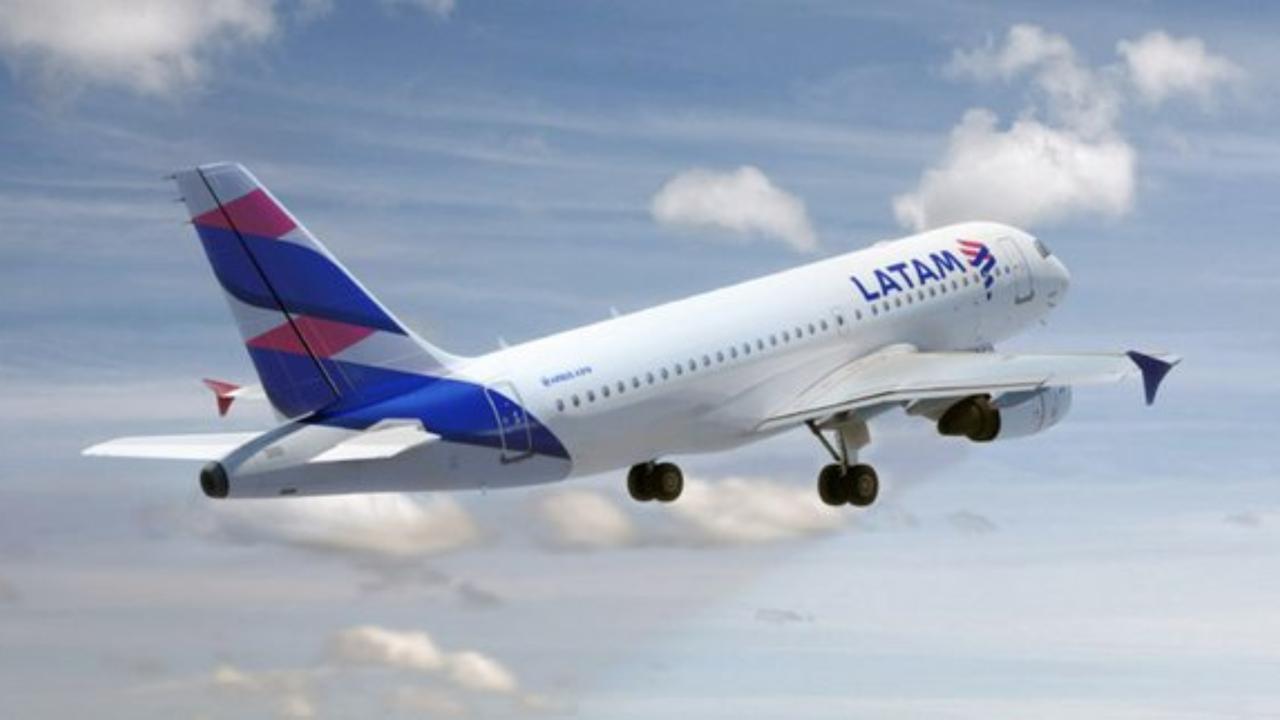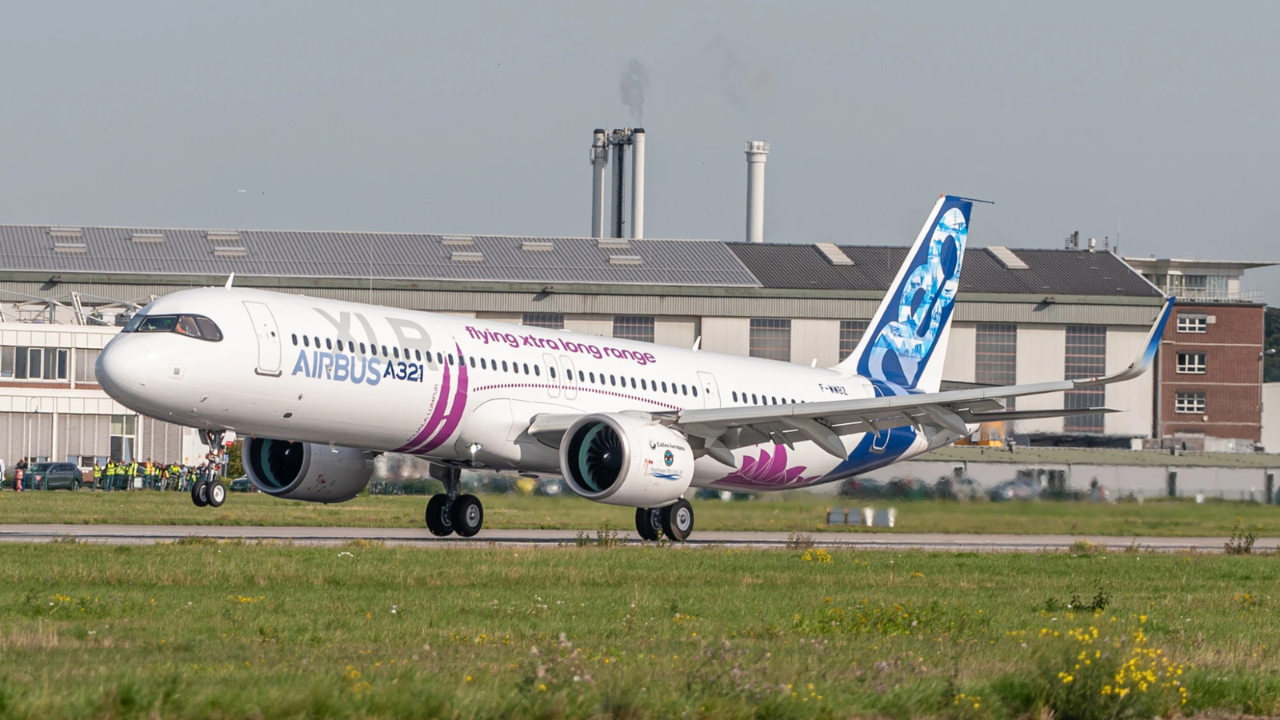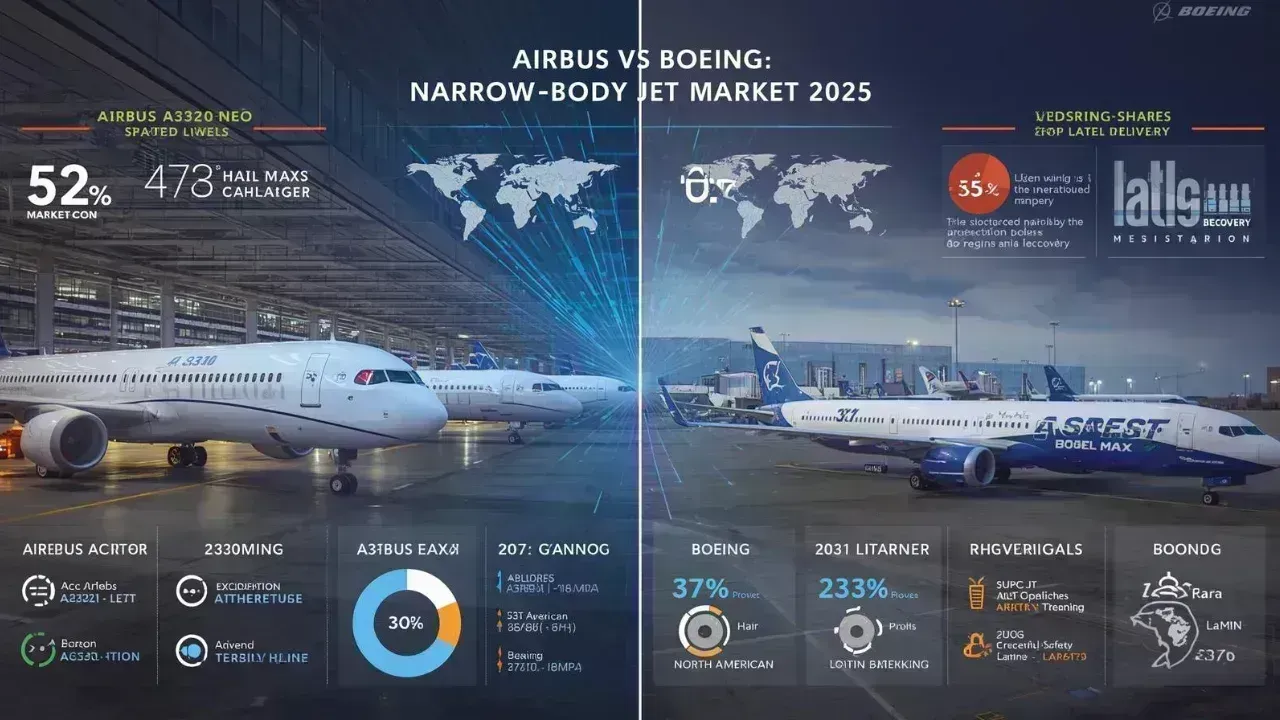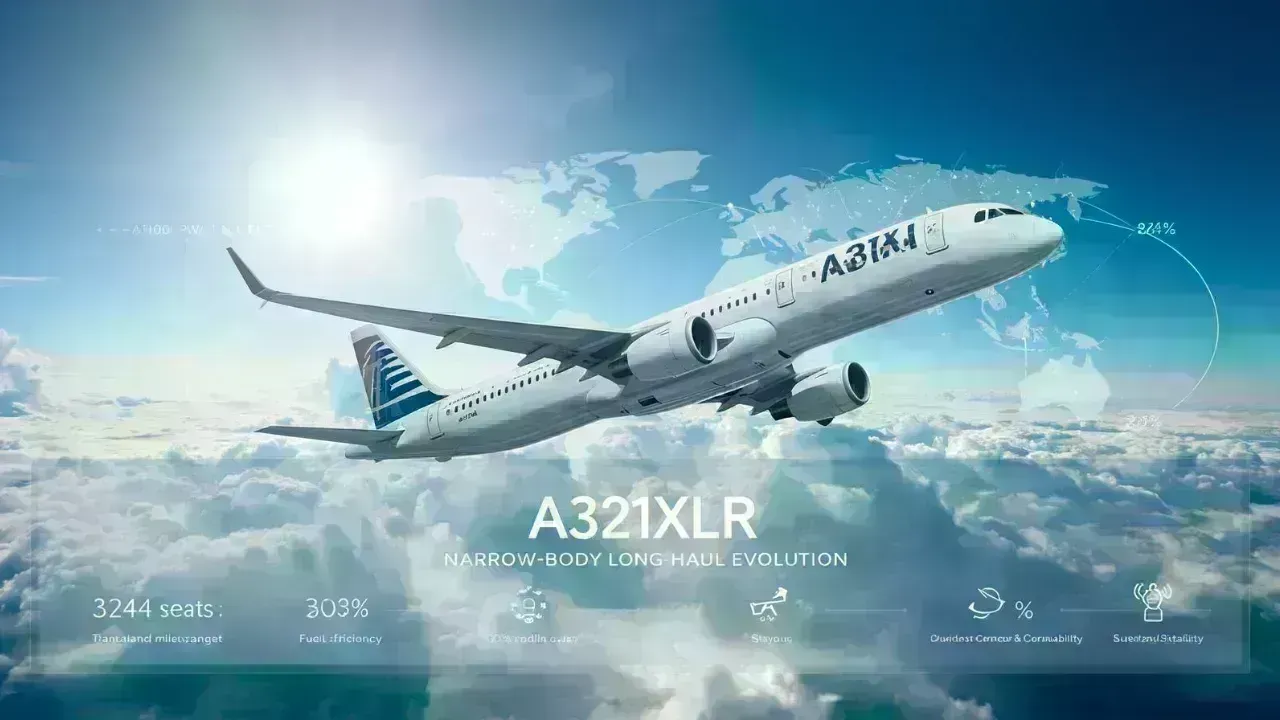
Post by : Amit
Photo : X / Gate7
LATAM's A319 Overhaul Targets Efficiency, Flexibility Across South America
In a bold bet on operational flexibility and fleet efficiency, LATAM Airlines is investing tens of millions of dollars to retrofit its Airbus A319 aircraft, giving new life to one of the airline’s most versatile—but aging—fleet segments. The project, aimed at maximizing aircraft utility across LATAM’s vast South American network, will introduce flexible cabin configurations, upgraded interiors, and improved customer experience, while reinforcing the group’s position in competitive domestic and regional markets.
The move comes as LATAM emerges from a period of financial restructuring with renewed strategic focus on network optimization and operational agility. As travel rebounds unevenly across the continent, airlines are under pressure to right-size capacity without sacrificing reach or profitability. LATAM’s A319 retrofit program appears to be a calibrated response to that challenge.
Reviving a Workhorse: Why the A319 Still Matters
While many global carriers are phasing out smaller narrowbody aircraft in favor of the more efficient A320neo family or larger A321 models, LATAM is taking a different route—reinvesting in its older A319s, which are often seen as ideal for Latin America's complex operating environments.
The Airbus A319 offers superior performance on short runways, high-altitude airports, and thinner routes—making it a go-to option for challenging destinations like Cuzco, La Paz, and Galápagos Islands, where newer or larger aircraft might face restrictions.
By retrofitting this fleet instead of replacing it, LATAM is choosing to extend the life of a proven performer, while giving it a modernized interior that can compete with newer jets in terms of passenger comfort.
A Flexible Cabin for a Flexible Network
Central to the retrofit project is a modular seating concept that allows LATAM to reconfigure A319 cabins quickly depending on route demand. For example, aircraft operating high-volume domestic flights can be set up in all-economy layouts, while those flying longer or premium-heavy regional routes—like Santiago to Lima or São Paulo to Quito—can feature a business-class section with reclining seats and added amenities.
According to LATAM Group executives, the new interior design is inspired by its long-haul cabin refresh, ensuring visual and experiential consistency across aircraft types. The goal is to present a unified brand image—regardless of aircraft model—while offering scalable comfort levels based on market dynamics.
The modularity doesn't just help passengers. For LATAM's operations team, it means faster turnarounds between configurations, better aircraft utilization, and the ability to respond in real time to market demand shifts—particularly vital in a region where political, economic, or weather-related disruptions are common.
Investment Numbers and Timeline
While LATAM has not disclosed the precise cost of the retrofit, sources familiar with the matter estimate it to be in the tens of millions of U.S. dollars, covering design, certification, cabin materials, and installation. The program is expected to be phased across multiple years, with initial aircraft entering modification lines by Q4 2025 and full rollout targeted by 2027.
This incremental approach will allow the airline to maintain sufficient fleet capacity while retrofits are underway—crucial for avoiding schedule disruptions across a tight network of regional routes.
A Wider Strategic Shift After Bankruptcy
The retrofit strategy is part of a broader post-bankruptcy transformation plan LATAM has pursued since exiting U.S. Chapter 11 proceedings in late 2022. With liquidity pressures eased and debt restructured, the group has redirected its focus toward fleet modernization, customer experience, and network agility.
CEO Roberto Alvo and LATAM’s executive team have been vocal about their "efficient growth" mandate, particularly as the group reasserts dominance in key markets like Brazil, Chile, Colombia, and Peru—each with unique geographic and infrastructure constraints.
By retrofitting rather than retiring its A319s, LATAM is not only conserving capital but also hedging against overreliance on newer aircraft, which remain subject to supply chain disruptions and delivery delays from Airbus and engine OEMs.
A Move That Resonates Across the Continent
The decision to modernize A319s is also a reflection of Latin America’s unique aviation challenges, where underserved secondary cities are often best reached with narrowbodies that balance performance and economics. Unlike the U.S. or Europe, where consolidation has centered networks around mega-hubs, Latin American airlines often depend on point-to-point regional flying over difficult terrain and variable infrastructure.
In this context, the A319 remains a nimble workhorse. With the retrofit, LATAM can deploy it more flexibly for missions ranging from Ecuadorian highlands to Chilean Patagonia, making use of performance characteristics that newer models can't always match.
“This isn’t just about giving passengers a better seat,” said a LATAM operations executive on condition of anonymity. “It’s about enabling our network to function more fluidly, especially where operating conditions are tough and margins are razor-thin.”
Competitive Pressures and Regional Rivals
LATAM’s retrofit announcement also comes at a time when regional competitors are intensifying their own fleet upgrades. Azul and Gol in Brazil, Sky Airline in Chile, and Avianca in Colombia have all made recent moves toward fleet standardization and modernization, leveraging the fuel efficiency and lower per-seat costs of A320neos and Boeing 737 MAX aircraft.
But those aircraft often favor trunk routes. LATAM’s focus on retrofitting the A319 could provide a competitive moat in the regional and secondary airport segments, particularly if rivals phase out smaller jets in favor of upgauging.
Passengers in these markets—who have historically tolerated older cabins and less frequency—could benefit most from LATAM’s move, gaining access to upgraded cabins without fare inflation.
Sustainability and Efficiency Gains
While the A319 is not the most fuel-efficient aircraft per seat mile, LATAM's retrofit program includes lighter-weight materials, improved lavatories, energy-efficient lighting, and cabin redesigns aimed at minimizing fuel burn.
It also underscores the airline's sustainability message: “use what you have wisely.” Instead of retiring a functional aircraft and purchasing new metal with long lead times and additional carbon footprint, LATAM is choosing to optimize existing resources, a message that resonates in the current ESG-conscious climate.
Additionally, retrofitting allows LATAM to update the aircraft’s avionics, comply with the latest ICAO environmental mandates, and install improved inflight entertainment and connectivity infrastructure—creating the foundation for future digital services onboard.
Passenger-Centric Upgrades
From a passenger standpoint, LATAM’s A319 retrofits will include:
Some aircraft will also offer personal device-based streaming, allowing passengers to access movies and TV shows via their own phones or tablets—a lower-cost alternative to embedded screens.
These upgrades are designed to standardize LATAM’s cabin feel across aircraft types, ensuring passengers booking short domestic hops get a similar brand experience to those flying long-haul.
Logistics and Cost Management
Retrofitting a fleet spread across multiple countries with varied regulatory requirements is no small task. LATAM will need to coordinate certification efforts with aviation authorities in Brazil, Chile, Peru, and beyond—each with distinct timelines and oversight procedures.
Then there’s the supply chain challenge: sourcing cabin parts, installing kits at MRO facilities, and scheduling aircraft out of rotation, all while maintaining high utilization rates. LATAM has indicated it will partner with multiple maintenance and engineering vendors to expedite the process and minimize downtime.
If the airline can navigate these logistical hurdles while maintaining cost discipline, the retrofit program could serve as a template for other emerging-market carriers looking to modernize without splurging on new aircraft orders.
Modernizing Without Breaking the Bank
As Latin America’s aviation sector claws back to pre-pandemic volumes, LATAM Airlines is positioning itself smartly for the next decade of growth—not by buying more jets, but by making the most of the ones it already owns. In retrofitting its A319 fleet with modular interiors and updated passenger comforts, LATAM is betting that flexibility is the new efficiency.
It’s a gamble that could pay off handsomely—serving hard-to-reach markets with a right-sized, modernized product while competitors chase larger, less nimble aircraft footprints. And for passengers, it means getting a better experience on the routes that need it most.
LATAM, Airbus A319, South America










Bengaluru-Mumbai Superfast Train Approved After 30-Year Wait
Railways approves new superfast train connecting Bengaluru and Mumbai, ending a 30-year demand, easi

Canada Post Workers Strike Halts Nationwide Mail and Parcel Services
Canada Post halts operations as CUPW strike disrupts mail and parcel delivery nationwide amid disput

PM Modi Launches BSNL ‘Swadeshi’ 4G Network, 97,500 Towers Built
India enters global telecom league as PM Modi inaugurates BSNL’s indigenous 4G, connecting 26,700 vi

India’s Iconic MiG‑21 Takes Final Flight After Six Decades of Service
After 60 years India retires its MiG‑21 fighter jet, a legendary yet controversial warplane marking

Hindustan Zinc unveils AI hotspot monitoring at Debari smelter
Hindustan Zinc launches AI-powered Switchyard Hotspot Monitoring at Debari smelter to cut outages bo

Chinese experts worked inside sanctioned Russian drone plant
Chinese drone specialists visited IEMZ Kupol supplying parts and drones via intermediaries, deepenin